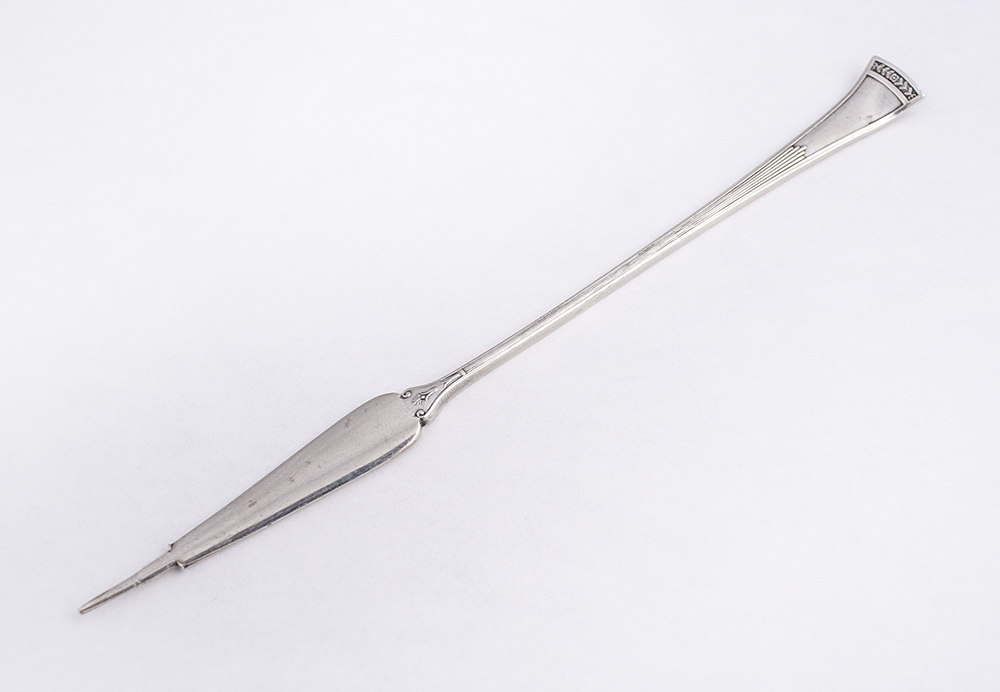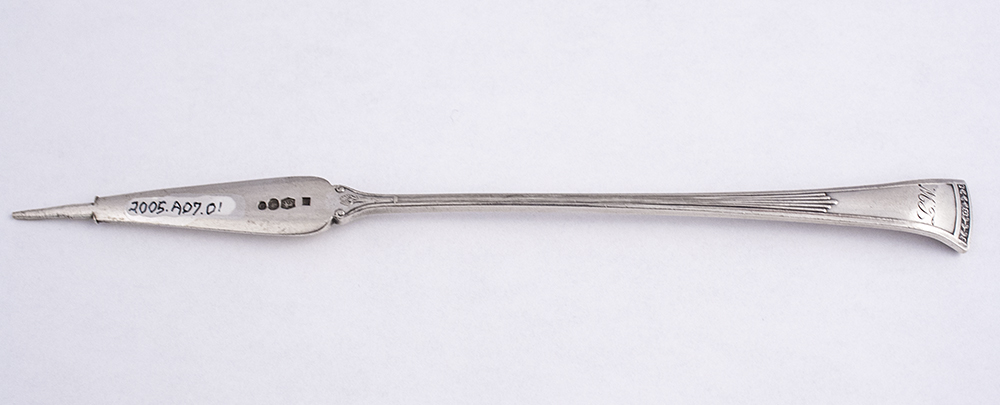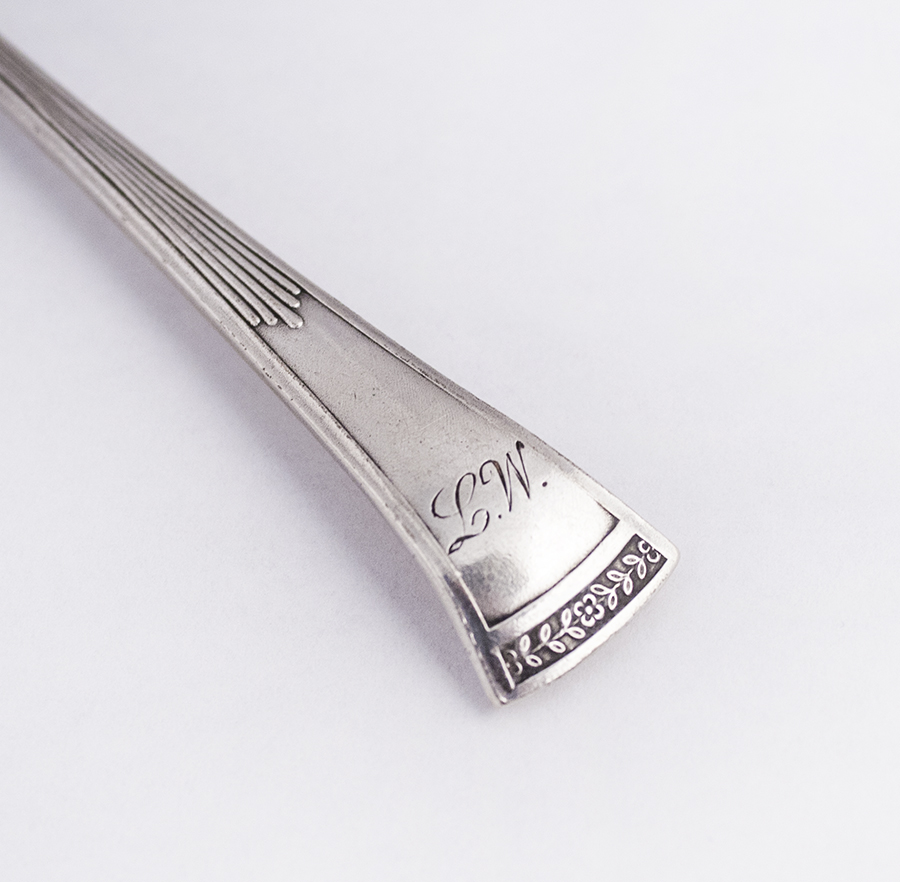January 23rd, 2017–
A yad, or a Torah pointer, is a ritual pointer used by readers to keep their place during Torah readings. Yad—a Hebrew word—translates to “hand,” and the Torah pointer functions as such. In Judaic tradition, it is considered disrespectful to touch the Torah, a sacred religious text, with bare hands. Therefore, the yad eliminates the need to use bare hands when reading the text. Beyond its religious function, the yad also protects the Torah from the potentially damaging effects of being handled. The parchment Torahs are made of is very delicate and can tear easily when handled. Using a yad decreases the chance the scroll will be damaged.
Judaic religious items like the yad, as part of Jewish heritage and culture, were targeted during the Holocaust. Many of these items were destroyed or confiscated, and the synagogues that housed them were desecrated. This yad, created in 1918, survived both World Wars and the Holocaust. It was crafted by a silversmith company based in the Netherlands—J.M. van Kempen & Zonen. It was carried from the Netherlands to England by a Dutch antiques dealer, and was later purchased by Frank V. Gricus in a small shop in North England. Mr. Gricus eventually donated it to the Museum. This yad is highly stylized and reflects both the design of the silversmith, and also the many artistic forms this traditional religious item can take.
More objects in our collection are available to view online! Click here to view.



